Build Muscle and Burn Fat with Free Weights
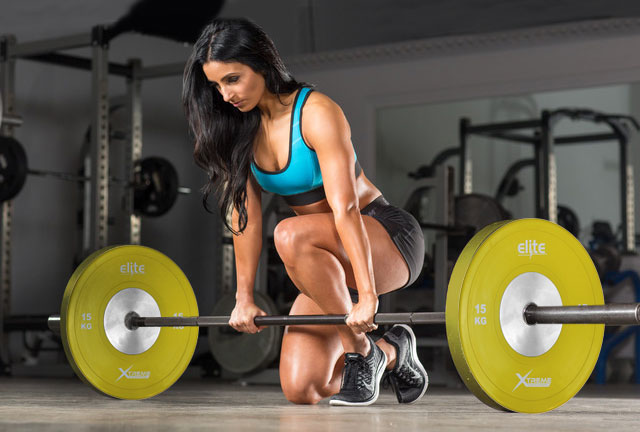
If you’re looking for a versatile and effective workout routine, using bars, plates, and dumbbells could be just what you need. These tools are the backbone of strength training, and with the right guidance, you can use them to achieve your fitness goals. In this article, we’ll explore the basics of bars, plates, and dumbbells workout guides and how you can use them to create a workout plan that’s right for you.
Key Takeaways
- Understanding the basics of strength training is essential before starting a bars, plates, and dumbbells workout guide.
- Creating a workout plan involves choosing the right exercises, sets, and reps, and incorporating progression and overload.
- With the right guidance, bars, plates, and dumbbells can be effective tools for achieving your fitness goals.
Understanding the Basics
Before we dive into the specifics of a bars, plates, and dumbbells workout guide, it’s important to understand the basics of strength training. This includes understanding the different types of exercises you can do, how to create a workout plan, and how to progress your workouts over time. By understanding these basics, you’ll be able to create a workout plan that’s tailored to your fitness goals and needs.
Strength training with bars, plates, and dumbbells is one of the most effective ways to build muscle mass and increase strength. Whether you are a beginner or an experienced athlete, understanding the basics of this type of workout is essential to maximise your results and avoid injury.
Types of Equipment
There are many different types of equipment that you can use for strength training, including bars, plates, and dumbbells. Each type of equipment has its own advantages and disadvantages, so it is important to choose the right equipment based on your goals and fitness level.
Dumbbells are handheld weights that are often used in pairs and come in various sizes and weights. They are versatile and can be used for a wide range of exercises to target specific muscle groups.
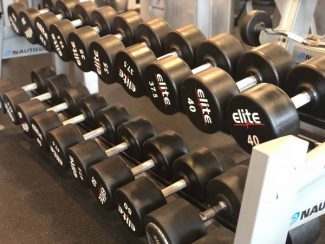
Weight plates are flat, round weights that can be attached to barbells or used independently for various exercises. There are two main types of weight plates: standard and Olympic. Standard weight plates have a smaller hole in the centre and are designed to fit standard bars, while Olympic weight plates have a larger hole in the centre, which is suitable for Olympic bars. The common weight denominations for weight plates include 1.25kg, 2.5kg, 5kg, 10kg, 15kg, 20kg, and 25kg.
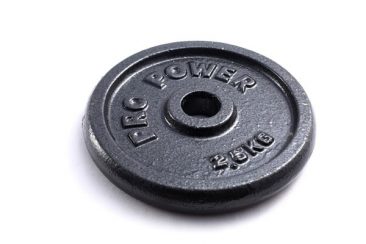
Barbells are long, straight bars that are either standard or Olympic. Olympic barbells can handle higher weight capacities and are commonly used in professional weightlifting competitions. They have a standard diameter of 50mm for the sleeves where the weight plates are loaded, whereas standard barbells have a smaller diameter.
Bars are a great option for exercises like squats, deadlifts, and bench presses, as they allow you to lift heavier weights and engage more muscle groups. Plates can be used with bars or dumbbells to add weight to your exercises. Dumbbells are a versatile option that can be used for a wide range of exercises, including curls, presses, and rows.
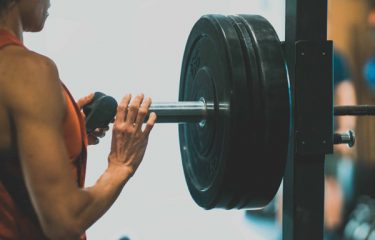
Workout Fundamentals
To get the most out of your strength training workout, it is important to follow a structured program that includes a variety of exercises targeting different muscle groups. Make sure to include compound exercises like squats, deadlifts, and bench presses, as well as isolation exercises like bicep curls and tricep extensions.
When planning your workout, aim to lift weights that are challenging but manageable, and increase the weight gradually over time as you get stronger. Always listen to your body and take breaks when you need them to avoid overexertion and injury.
By understanding the basics of strength training with bars, plates, and dumbbells, you can create an effective workout program that will help you achieve your fitness goals and build a stronger, healthier body.
Creating Your Workout Plan
Once you have a solid understanding of the basics, it’s time to create your workout plan. This involves choosing the right exercises, sets, and reps, as well as incorporating progression and overload to ensure you continue to see results over time. With a bars, plates, and dumbbells workout guide, you’ll have access to a wealth of information and guidance to help you create a workout plan that’s effective and sustainable.
When it comes to creating your workout plan using bars, plates, and dumbbells, there are a few key steps you should follow to ensure you are on the right track. By assessing your fitness level, setting goals, and structuring your routine, you can create a plan that is tailored to your unique needs and preferences.
Assessing Your Fitness Level
Before you begin any workout plan, it’s important to assess your current fitness level. This can help you determine where you are starting from and what areas you need to focus on. You can assess your fitness level by doing a few simple tests such as measuring your body composition, testing your cardiovascular endurance, and assessing your strength.
Setting Goals
Once you have assessed your fitness level, you can set goals that are specific, measurable, attainable, relevant, and time-bound (SMART). Your goals should be based on your fitness level and what you want to achieve. For example, if you are just starting out, your goal might be to build strength and endurance. If you are more advanced, your goal might be to increase your muscle mass or improve your athletic performance.
Structuring Your Routine
When structuring your routine, it’s important to consider your goals and fitness level. You should aim to include exercises that target all major muscle groups and that challenge you at your current fitness level. You can structure your routine in a variety of ways, such as using a full-body workout or a split routine that targets different muscle groups on different days.
Here is an example of a full-body workout plan that incorporates bars, plates, and dumbbells:
| Exercise | Sets x Reps |
| Barbell Squat | 3×10 |
| Dumbbell Bench Press | 3×10 |
| Bent-Over Barbell Row | 3×10 |
| Standing Barbell Curl | 3×10 |
| Seated Dumbbell Overhead Press | 3×10 |
| Plank | 3x30s |
Remember to warm up before each workout and cool down afterwards. You can also incorporate cardio and flexibility exercises into your routine to round it out.
By following these steps, you can create a workout plan that is tailored to your fitness level and goals. Remember to listen to your body and make adjustments as needed.
Exercises for Strength and Conditioning
If you’re looking to build strength and improve your overall conditioning, incorporating a variety of exercises using bars, plates, and dumbbells is a great way to achieve your goals. Here are some of the best exercises to include in your strength and conditioning routine:
Barbell Exercises
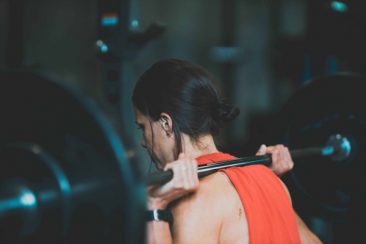
Barbell exercises are a great way to build overall strength and power. Here are some of the best barbell exercises you can include in your routine:
- Barbell Squat: The barbell squat is a compound exercise that targets multiple muscle groups, including the quads, hamstrings, glutes, and core. It’s one of the most effective exercises for building lower body strength and power.
- Barbell Deadlift: The barbell deadlift is another compound exercise that targets multiple muscle groups, including the hamstrings, glutes, and lower back. It’s a great exercise for building overall strength and power.
- Barbell Bench Press: The barbell bench press is a classic exercise that targets the chest, shoulders, and triceps. It’s a great exercise for building upper body strength and power.
Plate Exercises
Using plates in your workouts is a great way to add variety and challenge to your routine. Here are some of the best plate exercises you can include in your strength and conditioning routine:
- Plate Push: The plate push is a great exercise for building lower body strength and power. Simply place a plate on the ground and push it across the floor using your legs.
- Plate Squat: Holding a plate in front of your chest, perform a squat to target your quads, hamstrings, and glutes.
- Plate Overhead Press: Hold a plate overhead and press it up towards the ceiling to target your shoulders, triceps, and upper back.
Dumbbell Exercises
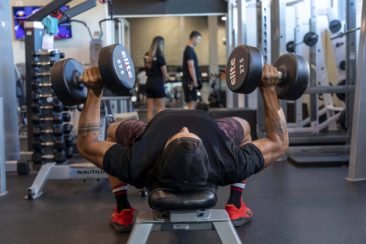
Dumbbells are a versatile piece of equipment that can be used to target a variety of muscle groups. Here are some of the best dumbbell exercises you can include in your strength and conditioning routine:
- Dumbbell Lunges: Holding a dumbbell in each hand, perform lunges to target your quads, hamstrings, and glutes.
- Dumbbell Rows: Holding a dumbbell in one hand, perform rows to target your back, biceps, and shoulders.
- Dumbbell Flyes: Lie on a bench and hold a dumbbell in each hand, then perform flyes to target your chest and shoulders.
Incorporating a variety of exercises using bars, plates, and dumbbells is a great way to build overall strength and conditioning. Be sure to use proper form and technique to avoid injury and get the most out of your workouts.
Progression and Overload
When it comes to strength training, progression and overload are essential concepts to understand. These principles help you to continually challenge your muscles, prevent plateaus, and achieve your fitness goals. In this section, we will discuss how to track your progress and increase intensity using bars, plates, and dumbbells.
Tracking Progress
To ensure that you are progressing and getting stronger, it is important to track your workouts. You can do this by keeping a workout journal or using a fitness app. Record the exercises you perform, the weight you use, and the number of sets and reps you complete. By tracking your progress, you can see how far you have come and identify areas where you need to improve.
Increasing Intensity
To continue making gains, you need to increase the intensity of your workouts. There are several ways to do this, including:
- Increasing weight: Gradually increase the weight you lift to challenge your muscles and promote growth. Aim to add 5-10% more weight each week.
- Increasing reps and sets: Increase the number of reps or sets you perform to push your muscles to fatigue and promote growth.
- Decreasing rest time: Shorten the rest time between sets to increase the intensity of your workouts and challenge your muscles.
- Slowing down tempo: Slow down the tempo of your reps to increase time under tension and promote muscle growth.
It is important to note that you should only increase the intensity of your workouts gradually to avoid injury and overtraining. Aim to increase intensity by no more than 10% each week.
By tracking your progress and increasing intensity using bars, plates, and dumbbells, you can continually challenge your muscles and achieve your fitness goals.
Tracking Your Workouts
To make the most out of your strength training with bars, plates, and dumbbells, it is essential to track your workouts. Monitoring your progress allows you to identify areas for improvement and maintain consistency. Consider keeping a workout journal, using fitness apps, or even employing digital spreadsheets. Whatever method you choose, ensure it’s easy for you to use and update regularly.
Tracking your workouts can be simple. At a minimum, record the exercises you perform, the weights you use, and the number of sets and repetitions you complete during each session. Over time, this information will help you tailor your workouts to your specific needs and ensure that you’re consistently progressing.
Recovery and Nutrition
To get the most out of your Bars, Plates & Dumbbells Workout Guide, it’s important to focus on both recovery and nutrition. Here are some tips to help you optimise your post-workout recovery and muscle growth.
Post-Workout Recovery
After a workout, your muscles need time to recover and repair. Proper recovery can help reduce soreness and fatigue, and improve overall performance. Here are some tips to help you recover faster:
- Stretching: Stretching after a workout can help reduce muscle soreness and improve flexibility. Focus on stretching the muscles you just worked out for maximum benefit.
- Rest: Rest is crucial for recovery. Make sure you get enough sleep and take rest days as needed. Overtraining can lead to injury and hinder your progress.
- Hydration: Drinking plenty of water before, during, and after your workout can help prevent dehydration and aid in recovery. Aim for at least 8 cups of water per day.
- Massage: Massaging sore muscles can help reduce inflammation and improve circulation. Consider using a foam roller or getting a professional massage to aid in recovery.
Nutrition for Muscle Growth
To build muscle, you need to provide your body with the right nutrients. Here are some key nutrients to focus on for muscle growth:
- Protein: Protein is essential for muscle growth and repair. Aim for at least 1 gram of protein per pound of body weight per day. Good sources of protein include lean meats, eggs, dairy, and plant-based sources like beans and tofu.
- Carbohydrates: Carbohydrates provide energy for your workouts. Aim for complex carbohydrates like whole grains, fruits, and vegetables, and avoid simple carbs like sugary drinks and processed foods.
- Healthy Fats: Healthy fats like omega-3s can help reduce inflammation and improve overall health. Good sources of healthy fats include fatty fish, nuts, and seeds.
By focusing on post-workout recovery and proper nutrition, you can optimise your muscle growth and get the most out of your Bars, Plates & Dumbbells Workout Guide.
Advanced Techniques
If you’re looking to take your Bars, Plates & Dumbbells workouts to the next level, incorporating advanced techniques is a great way to do it. Here are two techniques that can help you challenge your muscles in new ways:
Supersets and Dropsets
Supersets and dropsets are two popular techniques that can help you increase the intensity of your workouts. A superset involves performing two exercises back-to-back with no rest in between, while a dropset involves performing an exercise to failure, then immediately reducing the weight and continuing the set.
To perform a superset, choose two exercises that target different muscle groups and perform them back-to-back. For example, you could perform a set of bench presses followed immediately by a set of pull-ups. This will help you save time and increase the intensity of your workout.
Dropsets are another great way to increase the intensity of your workouts. To perform a dropset, choose an exercise and perform as many reps as you can with a heavy weight. Then, immediately reduce the weight and continue the set. Repeat this process until you can no longer perform any reps.
Pyramid Training
Pyramid training is another great technique that can help you increase the intensity of your workouts. To perform pyramid training, start with a light weight and perform a high number of reps. Then, increase the weight and perform a lower number of reps. Continue this process, increasing the weight and decreasing the reps, until you reach your heaviest weight.
For example, you could start with a set of 20 reps with a light weight, then perform a set of 15 reps with a slightly heavier weight, then perform a set of 10 reps with an even heavier weight, and so on. This will help you challenge your muscles in new ways and increase your overall strength.
Incorporating these advanced techniques into your Bars, Plates & Dumbbells workouts can help you challenge your muscles in new ways and take your fitness to the next level.
Workout Variations
When it comes to strength training, there are endless workout variations you can do with bars, plates, and dumbbells. Here are two popular workout variations that you can try:
Full-Body Workouts
Full-body workouts are great for beginners or anyone looking for a quick and efficient workout. As the name suggests, these workouts target all major muscle groups in one session. This means that you will be doing exercises that target your legs, back, chest, arms, and core all in one workout.
To create a full-body workout, you can choose one exercise for each muscle group and perform 3-4 sets of 8-12 repetitions for each exercise. For example, you can do squats for your legs, pull-ups for your back, bench press for your chest, bicep curls for your arms, and planks for your core.
Split Routines
Split routines are great for intermediate or advanced lifters who want to focus on specific muscle groups in each workout. With split routines, you divide your workout into different muscle groups and train each group on a different day.
For example, you can do a push-pull-legs split, where you do pushing exercises (such as bench press and shoulder press) on one day, pulling exercises (such as pull-ups and rows) on another day, and leg exercises (such as squats and deadlifts) on a third day.
Split routines allow you to target specific muscle groups more intensely and give them more time to recover between workouts. This can lead to faster muscle growth and strength gains.
No matter which workout variation you choose, remember to vary your workouts every 6 weeks to 2 months to prevent plateauing and keep your body challenged.
Home Workouts
If you don’t have access to a gym or prefer to work out at home, you can still get a great workout using bars, plates, and dumbbells. In this section, we’ll cover how to set up a home gym and some home workout routines.
Setting Up a Home Gym
Setting up a home gym can be a great way to save money on gym fees and have the convenience of working out at home. Here are some tips for setting up your home gym:
- Choose a space in your home that is dedicated to your workouts. This could be a spare room, garage, or even a corner of your living room.
- Invest in a good quality barbell, plates, and dumbbells. Look for equipment that is durable and can handle heavy weights.
- Consider purchasing a weight bench to add more variety to your workouts.
- Make sure you have enough space to move around and perform exercises safely.
- Don’t forget to include some cardio equipment such as a treadmill or stationary bike if you have space and budget.
Home Workout Routines
Here are some home workout routines that you can do using bars, plates, and dumbbells:
- Full-Body Workout: Perform 3-4 sets of 8-12 reps of each exercise, resting for 1-2 minutes between sets. Do the following exercises in order:
- Squats
- Deadlifts
- Bench press
- Bent-over rows
- Overhead press
- Bicep curls
- Tricep extensions
- Lunges
- Upper-Body Workout: Perform 3-4 sets of 8-12 reps of each exercise, resting for 1-2 minutes between sets. Do the following exercises in order:
- Bench press
- Bent-over rows
- Overhead press
- Bicep curls
- Tricep extensions
- Lower-Body Workout: Perform 3-4 sets of 8-12 reps of each exercise, resting for 1-2 minutes between sets. Do the following exercises in order:
- Squats
- Deadlifts
- Lunges
Remember to start with a weight that is challenging but manageable, and gradually increase the weight as you get stronger. Also, don’t forget to warm up before each workout and cool down afterward. With these home workout routines, you can get a great workout without leaving your home.
Safety and Injury Prevention
When it comes to working out with bars, plates, and dumbbells, safety and injury prevention are paramount. Practising proper form and technique not only enhances exercise efficiency but also helps prevent injuries to muscles, joints, and connective tissue.
It is essential to warm up before starting any workout, as it increases blood flow to the muscles and joints, preparing them for the exercises. Stretching after a warm-up helps to decrease stress on joints and further reduces the risk of injury.
Practising good form and technique is critical during exercises, as improper form can lead to undue stress on wrists, knees, and other joints. To achieve this, maintain a neutral spine and keep your core engaged to support the load. Proper alignment in each exercise minimises joint strain and injury risk. If you’re unsure about your form or technique, consulting a trainer can provide valuable guidance.
Here are some tips to ensure safety and injury prevention:
- Use the right equipment: Choosing the correct weight size, bar length, and plate configuration for your skill level is essential. Overloading your muscles too quickly can lead to injury.
- Adjustable safety bars: Make sure to use adjustable safety bars when lifting heavy weights to prevent accidents if you lose control of the weight.
- Grip: Firmly grip the bar to avoid it slipping out of your hands. Chalk or gloves can improve grip on the bar.
- Slow and controlled movements: Avoid jerky or rapid movements, which can place extra stress on joints and increase the risk of injury. Instead, focus on controlled, fluid motions.
- Rest days: Incorporating rest days into your training program allows your muscles and joints to recover, reducing the risk of overtraining and injury.
Remember, the most important aspect of safety and injury prevention is listening to your body. Stop any exercise if it causes pain or excessive discomfort, and seek professional advice if necessary. By following these guidelines and using bars, plates, and dumbbells correctly, you can work towards your fitness goals with confidence and peace of mind.
Frequently Asked Questions
What is an effective full-body workout using only weight plates?
An effective full-body workout using only weight plates can include exercises like squats, deadlifts, bent-over rows, lunges, and overhead presses. Remember to perform each exercise for 3-4 sets of 10-15 reps. Always maintain proper form and technique, and progressively increase the weight as you become stronger.
How can I design a balanced dumbbell and barbell workout plan for the week?
To design a balanced workout plan, you can follow a split routine that targets different muscle groups on different days. For example:
- Monday: Chest and triceps (e.g., dumbbell bench press, barbell bench press, dumbbell tricep extensions)
- Tuesday: Rest or cardio
- Wednesday: Back and biceps (e.g., dumbbell rows, barbell bent-over rows, dumbbell curls)
- Thursday: Rest or cardio
- Friday: Legs and shoulders (e.g., dumbbell lunges, barbell squats, dumbbell shoulder press)
This allows for adequate recovery and prevents overtraining. Make sure to warm-up before each session and include flexibility exercises regularly.
Which weight plate exercises are particularly beneficial for women?
Weight plate exercises beneficial for women include squats, lunges, overhead presses, and deadlifts. These exercises target major muscle groups and can improve strength, posture, balance, and overall fitness. Additionally, they may help prevent osteoporosis and injury by promoting bone density.
Can you suggest a routine for a 3-day mixed dumbbell and barbell workout?
A 3-day mixed dumbbell and barbell workout routine can look like this:
- Day 1: Upper body (e.g., dumbbell bench press, barbell bent-over rows, dumbbell shoulder press, barbell curls)
- Day 2: Lower body (e.g., barbell squats, dumbbell lunges, barbell deadlifts, dumbbell calf raises)
- Day 3: Full-body (e.g., dumbbell clean & press, barbell overhead press, dumbbell rows, barbell front squat)
This routine provides a well-rounded approach to strength training for all major muscle groups.
What arm exercises can be performed with weight plates?
Arm exercises that can be performed with weight plates include bicep curls, tricep extensions, and forearm curls. Always maintain proper form and technique during each repetition and progressively increase the weight as your strength improves.
Is it possible to gain muscle effectively using only dumbbells, barbells, and weight plates?
Yes, it is possible to gain muscle effectively using only dumbbells, barbells, and weight plates. Key factors for muscle gain include progressive overload, adequate recovery, proper nutrition, and consistency in training. Be sure to choose exercises that target all muscle groups and provide a balanced approach to strength training.
Written by Elite Fitness Team,
January, 2024
